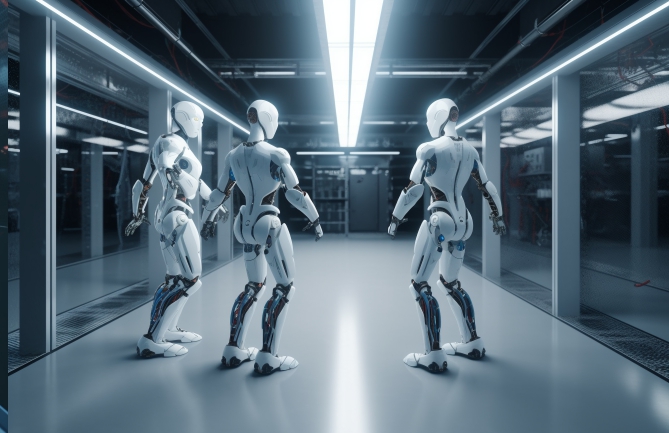Apple is secretly developing humanoid and non-humanoid robots with the goal of integrating them into the smart home ecosystem of the future. The news comes from well-known Apple analyst Mingchi Kuo, who pointed out that Apple's research is currently in its early stages and large-scale production is expected to be achieved until 2028. Apple's move is different from previous confidentiality strategies. It chooses to disclose some research results, which is considered an important measure to attract top talents to deal with the talent shortage in the robotics industry. The public research paper focuses on “non-anthropomorphic” robot design, emphasizing the user-robot interaction experience rather than appearance.
Recently, well-known Apple analyst Guo Mingchi revealed that Apple is actively exploring the research and development of humanoid and non-humanoid robots and regards them as an important part of the future smart home ecosystem. The news follows a research paper released by Apple that explores how humans interact with "non-anthropomorphic" robots, such as Pixar-style desk lamps.
Although Apple's research is still in the early proof of concept stage, Guo Mingchi pointed out that this study provides an important technical reference for future consumer robots. He expects that mass production of Apple robots may not be achieved until 2028, a timeline similar to the early stages of Apple's car project.

What’s unique about Apple’s research this time is its high transparency, which is in stark contrast to the company’s usual confidentiality style. Guo Mingchi believes that Apple's choice to publicly research results is partly to attract top engineers to join its robotics project. In recent years, the robot industry has faced the problem of talent shortage, especially in the context of the rapid development of generative artificial intelligence, public research has become an important means of corporate recruitment.
The research paper emphasizes the "non-anthropomorphic" design, aiming to distinguish robot research from traditional humanoid robots. Guo Mingchi said that Apple is more concerned with how users establish perception with robots than the appearance of robots. This means that sensing hardware and software will be the core of Apple's robotics technology.
Apple's robot development may cover a variety of forms, from all-human-shaped housework robots to smart home devices with robotic arms. Currently, leaked information shows that Apple is more inclined to develop non-humanoid robots similar to smart home displays than complex humanoid robots. This choice is considered more realistic because the home robot market is not yet mature and consumers' acceptance of high-end humanoid robots is still doubtful.
At the same time, the field of industrial robots is also actively exploring the home use path of humanoid robots. Several companies, including 1X, Figure and Apptronik, are working to bring industrial robotics into the home scenario. However, price and reliability remain the main challenges. Taking the high price of Apple's Vision Pro as an example, the cost of home humanoid robots may be higher, and it will take some time for the market to become popular.
Apple's cautious attitude in the field of robots is in contrast to its success in smart homes and wearable devices. Although Silicon Valley has repeatedly tried to launch home robots but failed, Apple still hopes to open up new markets through technological innovation. In the next few years, with more leaked information being disclosed, the progress of the Apple robot project will become the focus of attention of the technology community.
Although Apple has faced challenges when entering the robot field, it also demonstrates its ambitions and long-term layout in technological innovation. Its attention to non-humanoid robots may bring new possibilities to the home robot market, so let's wait and see.